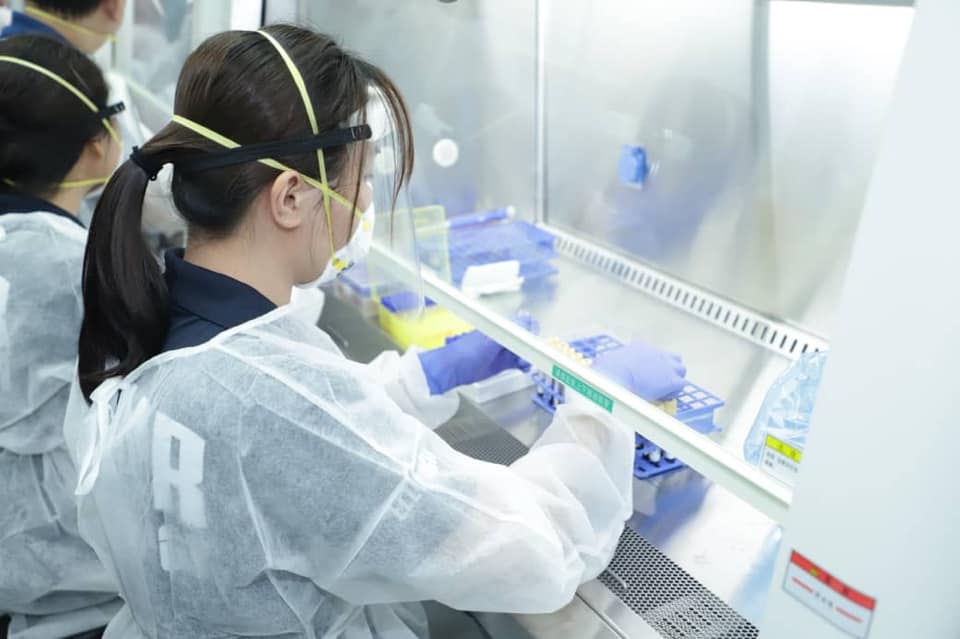KUALA LUMPUR, Dec 7 — Preliminary data from the global epicentre of Omicron in Tshwane district in Gauteng province, South Africa, shows that the new strain is possibly less severe than previous Covid-19 variants, despite a spike in infections.
The study on the Steve Biko/Tshwane District Hospital Complex in Pretoria, the heart of Tshwane district, indicated an exponential rise in Covid-19 cases in Tshwane from 8,659 new infections in the 47th epidemiological week (November 21 to 27) to 41,921 cases by December 3 before the end of the 48th epidemiological week (November 28 to December 4).
A “sharp rise” was recorded in Covid-19 hospital admissions at the Steve Biko Academic and Tshwane District Hospitals (SBAH/TDH), with 166 new admissions between November 14 and 29.
The hospitalisation rate among younger adults and children was higher compared to previous coronavirus waves in Tshwane district.
According to the report, more than 80 per cent of Covid-19 admissions in that period of time comprised patients aged below 50.
About 19 per cent of hospital admissions were children aged nine and below, while 28 per cent of admissions comprised adults from the age of 30 to 39, the highest number of admissions.
Report author Dr Fareed Abdullah, director of the Office of HIV/AIDS and Tuberculosis Research at the South African Medical Research Council, said that the severity of the disease was measured by the Covid-19 death rate in the hospital.
Steve Biko Academic Hospital (SBAH) and Tshwane District Hospital (TDH) reported 10 Covid-19 deaths from November 14 to 29, or six per cent of the 166 patients.
Dr Abdullah said this scenario was better compared to the reported 17 per cent Covid-19 deaths in the province and 23 per cent deaths nationwide for the past 18 months.
Four deaths involved adults aged between 26 to 35, whereas five deaths occurred among elderly people aged above 60. One death involved a child with Covid-19. The child died due to other medical conditions.
“There were no Covid related deaths among 34 admissions in the paediatric Covid wards over the last two weeks,” Dr Abdullah mentioned in the report.
His report identified a notable finding in the length of hospitalisation among Covid-19 patients in the past 14 days. The average length of stay among Covid-19 patients from November 14 to 19 was only 2.8 days, almost three times lower than the average 8.5-day stay for the past 18 months.
“The trend over the next two weeks will be clarified as the number of deaths is currently low, and sufficient time will have elapsed for the development of greater severity of disease and the number of deaths might be expected to increase.”
Dr Abdullah also noted that only two patients were admitted into the Covid-19 ICU from November 14 to 29 and none of them had a primary diagnosis of Covid-19.
“Sixty-three patients were admitted to high care, but our anecdotal information is that the majority of high care admissions were for a diagnosis other than Covid.
“Three of the four patients in the high care ward had a primary diagnosis of severe Covid pneumonia so it could be that the more recent profile is changing to more severe Covid disease. A more detailed analysis of high care patients is being conducted and may be more revealing.”
Dr Abdullah stated that a review of chest X-Rays, lung computed tomography findings, blood gas measures, blood biomarkers and the related impacts of comorbidities of a patient is required to measure the severity of Covid-19 accurately among the patients admitted into hospital.
The report stated that from 42 patients currently in Covid wards on December 2, twenty-nine people (70 per cent) did not require oxygen support and were fine on room air, as they were not presented with any respiratory symptoms. These were “incidental Covid admissions” who got hospitalised for another reason, but then tested positive for Covid-19.
The balance 13 patients used supplemental oxygen, including four patients who had it for other medical reasons.
“This is a picture that has not been seen in previous waves,” Dr Abdullah wrote.
“In the beginning of all three previous waves and throughout the course of these waves, there has always only been a sprinkling of patients on room air in the Covid ward and these patients have usually been in the recovery phase waiting for the resolution of a comorbidity prior to discharge.”
Dr Abdullah said that the majority of Covid-19 patients in the Covid ward used to be on some form of oxygen support with the “incessant sound of high flow nasal oxygen machines, or beeping ventilator alarms.”
At the same time, Dr Abdullah also noted that the number of samples used in this study was relatively small. He also did not confirm if all the patients involved in this study were infected with the Omicron variant.
“In summary, the first impression on examination of the 166 patients admitted since the Omicron variant made an appearance, together with the snapshot of the clinical profile of 42 patients currently in the Covid wards at the SBAH/TDH complex, is that the majority of hospital admissions are for diagnoses unrelated to Covid-19,” he wrote.
“The SARS-CoV-2 positivity is an incidental finding in these patients and is largely driven by hospital policy requiring testing of all patients requiring admission to the hospital.”
“More time is required to fully answer the questions about the severity of Covid-19 caused by the new Omicron variant.”
It is to be noted that the report has not been peer-reviewed.








